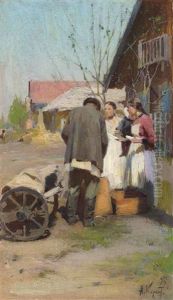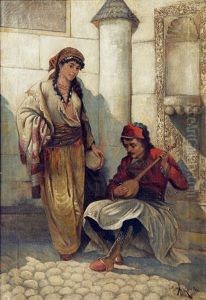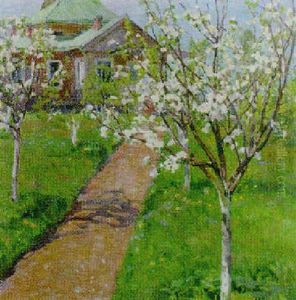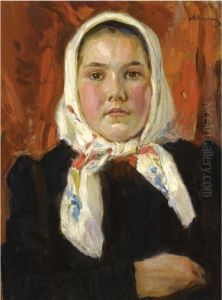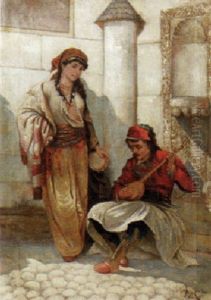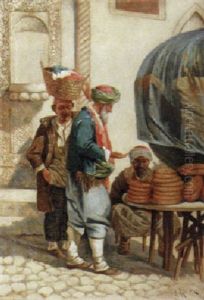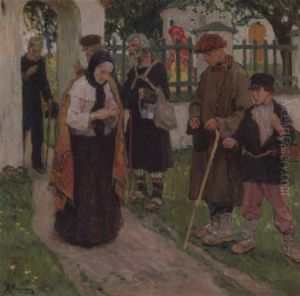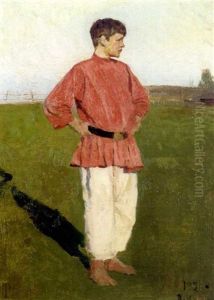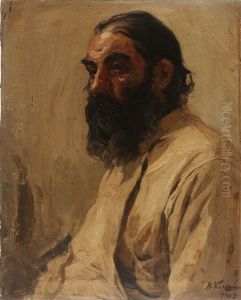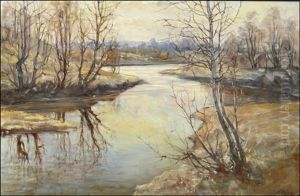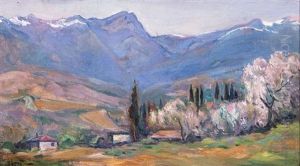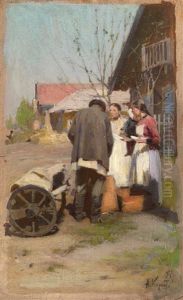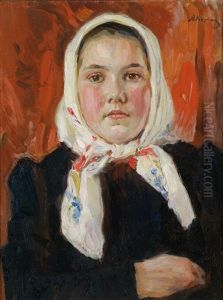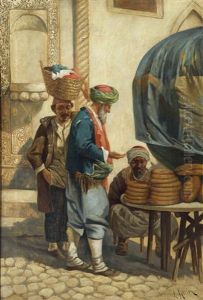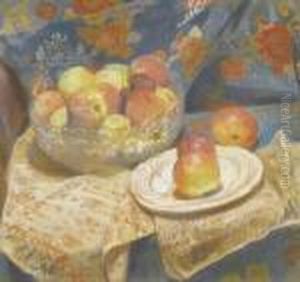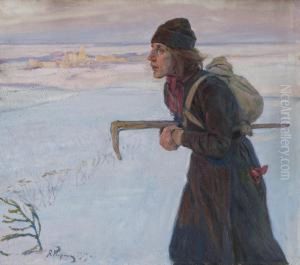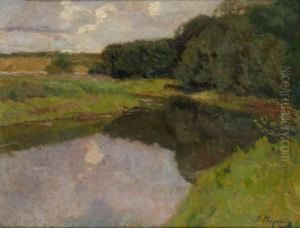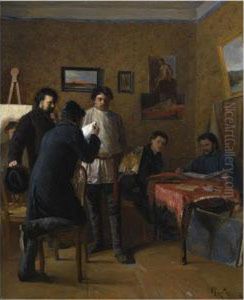Aleksei Mikhailovich Korin Paintings
Aleksei Mikhailovich Korin was a distinguished Russian painter and art restorer, born on May 17, 1865, in the town of Palekh, Russia. He was born into an artistic family, which played a crucial role in his early education in art. His brother, Pavel Korin, also became a well-known Russian artist. Aleksei Korin's initial training began under the guidance of icon painters in his hometown, which was famous for its traditional icon painting.
In pursuit of formal art education, Korin moved to Moscow, where he attended the Moscow School of Painting, Sculpture and Architecture. There, he was taught by eminent artists such as Vasily Perov, Alexei Savrasov, and Vasily Polenov. His education was comprehensive, covering both traditional Russian art as well as contemporary European movements, which influenced his artistic development. After graduating from the Moscow School, Korin furthered his studies at the Imperial Academy of Arts in Saint Petersburg, where he honed his skills in painting and restoration.
Korin's work was profoundly influenced by Russian history and Orthodox Christian themes. He became particularly known for his restoration work on ancient Russian frescoes and icons, as well as for his original religious paintings. His meticulous approach to restoration helped to preserve Russia's cultural heritage, and he was recognized for this work with awards and honors.
Throughout his career, Korin participated in various exhibitions and became a member of several art societies. His paintings were appreciated for their technical skill and depth of feeling, capturing the essence of Russian spiritual life. Despite the political upheavals in Russia at the time, including the October Revolution of 1917, Korin continued to work and contribute to Russian art until his death on June 24, 1923.
Aleksei Mikhailovich Korin left a lasting legacy through his contributions to art restoration and his religious-themed paintings. His work continues to be studied and admired for its beauty and historical significance. His brother, Pavel Korin, would later become a famous artist in his own right, further contributing to the legacy of the Korin family in Russian art history.
